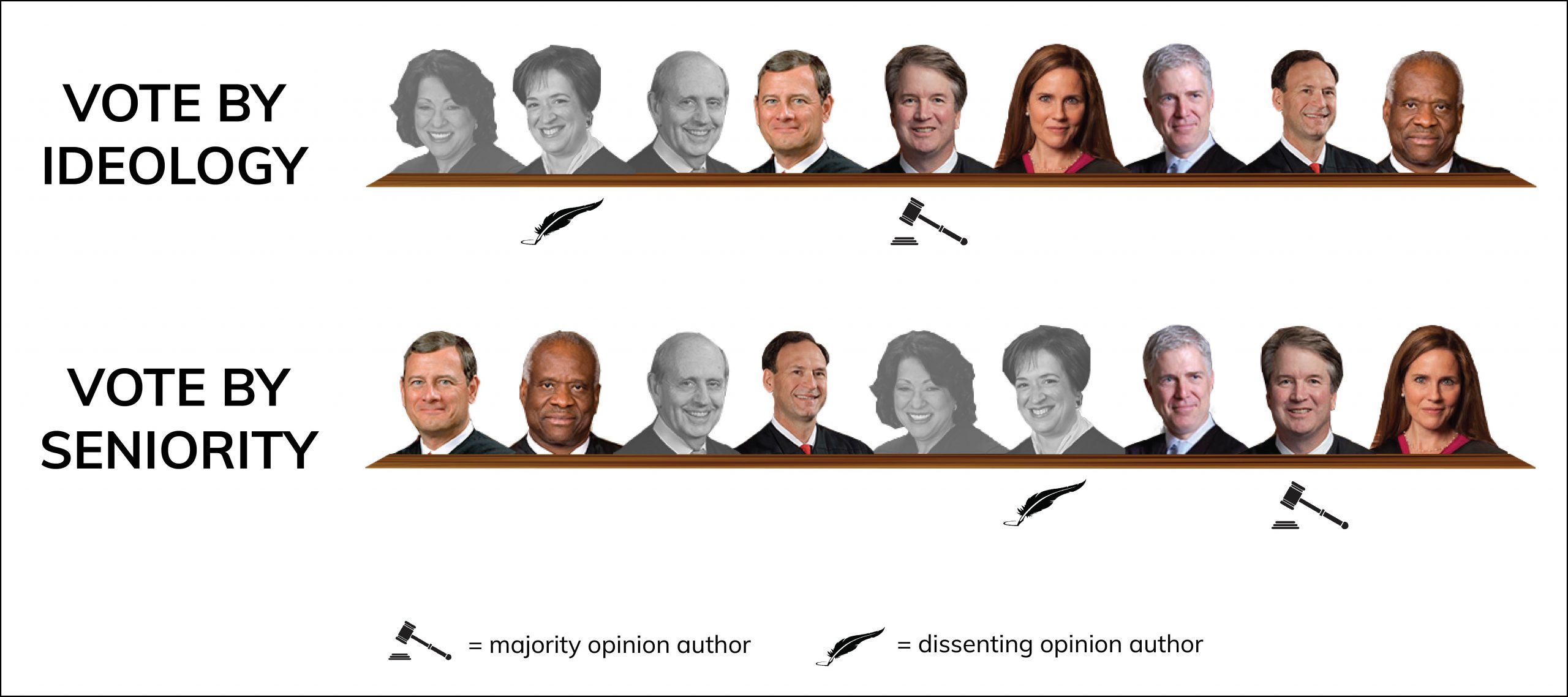Opinion Analysis
Justices divided on retroactive application of jury-unanimity rule

on May 17, 2021 at 2:01 pm

The Supreme Court on Monday ruled by a vote of 6-3 that inmates whose convictions became final before last year’s decision in Ramos v. Louisiana, holding that the Constitution’s Sixth Amendment establishes a right to a unanimous jury that applies in both federal and state courts, cannot take advantage of it on federal collateral review. The geographical impact of Monday’s decision is limited to Louisiana and Oregon – the only two states that have allowed non-unanimous jury verdicts in recent years. The decision means that hundreds of people who were found guilty by non-unanimous juries in those two states before Ramos will not get to seek to have their convictions overturned. Monday’s ruling, issued on the same day that the court announced it would take up a challenge to a Mississippi ban on abortion that could upend Roe v. Wade, also left the justices divided over the issue of respect for their prior precedent.
The dispute over nonunanimous jury verdicts dates back almost 50 years, to the court’s 1972 ruling in Apodaca v. Oregon, holding that although the Sixth Amendment guarantees a right to a unanimous jury in federal criminal cases, that right does not apply to defendants in state trials. The justices were deeply divided in reaching that conclusion: Four of them would have ruled that the Sixth Amendment does not require a unanimous jury at all, while four different justices would have ruled that the Sixth Amendment guarantees a right to a unanimous jury in both federal and state trials. That left the ninth justice, Justice Lewis Powell, to decide the outcome. He wrote that the Sixth Amendment protects the right to a unanimous jury for defendants in federal criminal trials, but not those in state criminal trials.
In 2020 in Ramos, the Supreme Court – by a vote of 6-3 – overturned its ruling in Apodaca. In an opinion by Justice Neil Gorsuch, the majority explained that there was a long history of a right to a unanimous verdict when the Sixth Amendment was adopted. Gorsuch also stressed that both Louisiana and Oregon had imposed the non-unanimous jury rule for racist reasons. But the Ramos opinion left open the question of whether the decision applied retroactively.
The case decided by the court on Monday, Edwards v. Vannoy, was that of Thedrick Edwards, who was convicted and sentenced to life in prison, without the possibility of parole, in Louisiana nearly 15 years ago for a series of crimes that included armed robbery, rape and kidnapping. The only Black juror at Edwards’ trial voted to acquit Edwards, who is also Black, on all counts. Edwards’ conviction became final in 2011.
In a decision by Justice Brett Kavanaugh that was joined by the court’s other conservative justices, the court explained that the ruling in Ramos announced a “new rule” because “many courts interpreted Apodaca to allow for non-unanimous jury verdicts in state criminal trials.” Under the Supreme Court’s case law, Kavanaugh wrote, a decision that establishes a new rule of criminal procedure generally does not apply retroactively to cases in which inmates are seeking federal post-conviction relief. The court has recognized an exception to this general presumption, Kavanaugh acknowledged, for rules that are so significant that they rise to the level of “watershed” rules. But, Kavanaugh observed, the court has not actually found such a rule in the last 32 years, and it has indicated that it is “unlikely” to recognize such a rule in the future.
“Continuing to articulate a theoretical exception that never actually applies in practice,” Kavanaugh suggested, “offers false hope to defendants, distorts the law, misleads judges, and wastes the resources of defense counsel, prosecutors, and courts.” Therefore, Kavanaugh concluded, it is “time — probably long past time — to make explicit what has become increasingly apparent to bench and bar over the last 32 years: New procedural rules do not apply retroactively on federal collateral review.”
The court’s ruling drew a sharp dissent from Justice Elena Kagan, who was joined by Justices Stephen Breyer and Sonia Sotomayor. Kagan suggested that the jury-unanimity requirement was so clearly a watershed rule that the majority was left with little choice other than to scrap the watershed exception altogether. And it did so, Kagan contended, even though no one had asked it to do so and without any good reason to do so. “The majority,” Kagan concluded, “crawls under, rather than leaps over” the bar created by the principle that the court should normally adhere to its prior precedent.
This article was originally published at Howe on the Court.


